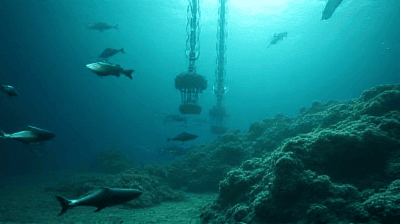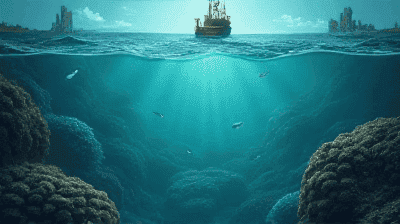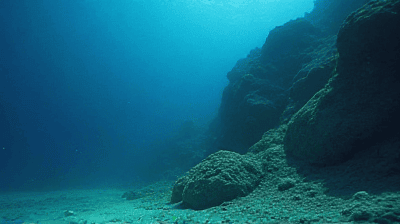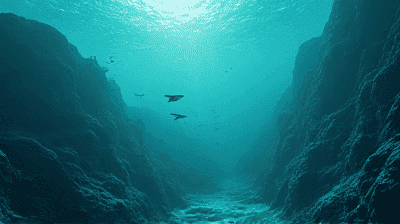Deep-Sea Mining Threats: How Ocean Floor Exploitation Could Destroy Unknown Species
As humanity increasingly turns to the ocean for resources, deep-sea mining has emerged as a controversial method of exploiting valuable minerals and metals from the ocean floor. This practice has gained momentum due to the rising demand for resources needed for modern technologies, including smartphones, electric vehicles, and renewable energy systems. However, the deep sea remains one of the most unexplored and least understood environments on Earth, teeming with unknown species and complex ecosystems. The potential impacts of deep-sea mining not only threaten these delicate habitats but also raise ethical and ecological questions about our responsibility to preserve the oceans.
Understanding Deep Sea Mining
What is Deep Sea Mining?
Deep sea mining involves the extraction of mineral resources from the ocean floor, typically at depths of 200 meters or more. The process targets various resources, including:
- Polymetallic Nodules: These are potato-sized lumps composed of metals like nickel, copper, cobalt, and rare earth elements, found on the abyssal plains of the ocean.
- Seafloor Massive Sulfides (SMS): Formed from hydrothermal vents, these deposits are rich in metals such as gold, silver, and zinc.
- Cobalt-Rich Ferromanganese Crusts: These crusts grow on seamounts and are rich in cobalt, as well as other critical metals.
Techniques Used in Deep Sea Mining
Deep sea mining employs several techniques to extract resources from the ocean floor:
- Remote Operated Vehicles (ROVs): Unmanned submersibles equipped with cameras and manipulators are used to locate and collect mineral resources.
- Dredging: This method involves the use of specialized equipment to scoop up sediment and minerals from the seabed.
- Riser Systems: These systems pump mineral-laden sediment from the ocean floor to surface vessels for processing.
Global Demand for Deep Sea Resources
The global demand for minerals, driven by technological advancements and the transition to green energy, has placed significant pressure on ocean resources. Key drivers of this demand include:
- Electronics: The production of smartphones, laptops, and other electronic devices requires metals that can be found in deep sea deposits.
- Renewable Energy: Wind turbines and solar panels need various minerals, including rare earth elements, which may be sourced from the deep ocean.
- Electric Vehicles: The shift to electric vehicles necessitates the extraction of lithium and cobalt, often found in seabed deposits.
Biodiversity of the Deep Sea
The Richness of Deep-Sea Ecosystems
The deep sea is one of the most biodiverse and unique environments on the planet. It is home to a vast array of organisms adapted to extreme conditions, including high pressure, cold temperatures, and complete darkness. Some notable features of deep-sea biodiversity include:
- Unique Fauna: Creatures such as anglerfish, giant squid, and deep-sea corals have evolved fascinating adaptations to survive in their harsh habitats.
- Benthic Communities: The ocean floor hosts diverse communities of organisms, including worms, mollusks, and crustaceans, some of which play crucial roles in nutrient cycling.
- Hydrothermal Vents: These underwater geysers support unique ecosystems rich in chemosynthetic bacteria, which serve as the foundation of the food web in these areas.
The Potential for Discovering New Species
The deep sea is largely unexplored, and scientists estimate that a significant percentage of marine species remain unidentified. Deep-sea mining threatens these unknown species, which could hold ecological, medical, or economic potential. The loss of even a single species can disrupt entire ecosystems and lead to unforeseen consequences.
Threats Posed by Deep Sea Mining
Habitat Destruction
One of the most immediate threats from deep-sea mining is habitat destruction. The mining process can lead to:
- Physical Disturbance: The mechanical extraction of materials can crush and bury delicate benthic habitats, killing organisms that rely on these environments.
- Sediment Plumes: Dredging and extraction create sediment plumes that can smother marine life by blocking sunlight and disrupting feeding behaviors.
- Fragmentation of Ecosystems: Mining activities can break the connectivity of habitats, impacting species’ movement and reproduction.
Impact on Marine Biodiversity
The consequences of habitat destruction extend beyond immediate physical damage:
- Loss of Species: Mining activities can lead to the extinction of localized species that cannot survive the altered conditions.
- Ecosystem Imbalance: A decline in certain species can disrupt food webs, leading to cascading effects on other organisms and overall ecosystem health.
- Endangered Species: Unique and vulnerable species, such as deep-sea corals and certain fish populations, are particularly at risk from mining activities.
Pollution and Chemical Discharges
Deep-sea mining activities can introduce pollutants into marine ecosystems:
- Heavy Metals: Mining operations may release heavy metals such as mercury and lead into the water column, posing risks to marine life.
- Chemical Discharges: Chemicals used in the mining process can contaminate surrounding waters and affect local flora and fauna, potentially entering the food chain.
- Microplastics: The disturbance of seabed sediments can release trapped microplastics into the environment, compounding pollution issues.
Climate Change Implications
Deep-sea ecosystems play a significant role in carbon sequestration, helping to mitigate climate change. The destruction of these habitats through mining can release stored carbon into the atmosphere, exacerbating global warming.
Legal and Regulatory Framework
International Treaties and Agreements
The regulation of deep-sea mining is primarily governed by international treaties, notably:
- United Nations Convention on the Law of the Sea (UNCLOS): This treaty establishes guidelines for the use and conservation of ocean resources, including provisions for deep-sea mining.
- International Seabed Authority (ISA): The ISA is responsible for regulating mineral-related activities in the international seabed area, issuing licenses to mining companies and ensuring compliance with environmental standards.
Gaps in Regulation
Despite existing frameworks, many gaps remain in the regulation of deep-sea mining:
- Insufficient Environmental Safeguards: Environmental impact assessments (EIAs) often lack comprehensive assessments of potential effects on biodiversity and ecosystems.
- Limited Oversight: Monitoring and enforcement capabilities are limited, making it challenging to ensure compliance with regulations.
- Pressure from Industry: The growing interest and investment in deep-sea mining often overshadow conservation concerns, leading to rushed approvals and inadequate assessments.
The Path Forward: Sustainable Resource Management
Promoting Responsible Practices
The future of deep-sea mining should prioritize sustainable and responsible practices that mitigate harm to marine ecosystems. Key strategies include:
- Comprehensive Environmental Assessments: Implementing rigorous environmental impact assessments before mining operations begin can identify and address potential risks to biodiversity.
- Monitoring and Reporting: Establishing robust monitoring and reporting systems can ensure compliance with environmental regulations and facilitate adaptive management.
- Adaptive Management: Employing adaptive management practices allows for ongoing adjustments to mining operations based on the latest scientific information and ecological observations.
Conservation Areas and Marine Protected Areas
Designating marine protected areas (MPAs) in regions with significant biodiversity can safeguard vulnerable ecosystems from mining activities. A more extensive network of MPAs can:
- Support Ecosystem Resilience: Protecting critical habitats allows ecosystems to recover and adapt to changing environmental conditions.
- Facilitate Research and Monitoring: Protected areas can serve as sites for scientific research, enhancing our understanding of deep-sea ecosystems and their responses to human activities.
Encouraging Sustainable Alternatives
Innovating sustainable alternatives to deep-sea minerals can reduce reliance on ocean floor exploitation:
- Recycling and Urban Mining: Increasing the recycling of metals and minerals from electronic waste can lessen the demand for newly mined resources.
- Sustainable Materials: Developing alternative materials, such as biodegradable and renewable options, can help decrease reliance on metals sourced from the deep sea.
Engaging Stakeholders and Communities
Involving stakeholders, including local communities, scientists, and conservation organizations, in decision-making processes is crucial for effective resource management. Collaborative governance can ensure that diverse perspectives are considered and promote equitable outcomes.
Conclusion
The threats posed by deep-sea mining to unknown species and marine ecosystems are profound and multifaceted. As humanity seeks to exploit the resources of the ocean floor, we must remain vigilant in safeguarding these vital habitats. Understanding the ecological importance of the deep sea, implementing robust regulatory frameworks, and prioritizing sustainable practices are crucial components of a responsible approach to resource management.
As we navigate the complexities of deep-sea mining, it is essential to recognize our ethical responsibility to preserve the biodiversity of the ocean. By fostering collaboration among stakeholders and investing in sustainable alternatives, we can create a future that balances resource needs with the protection of our planet's precious marine ecosystems.



